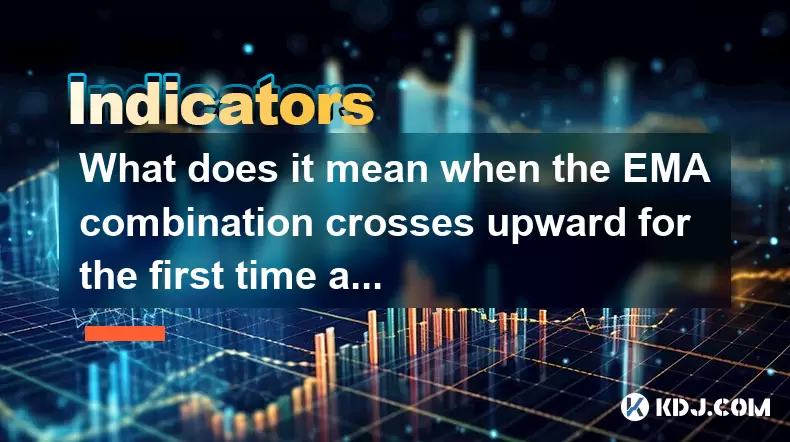-
 Bitcoin
Bitcoin $118600
0.36% -
 Ethereum
Ethereum $3855
1.06% -
 XRP
XRP $3.195
-0.09% -
 Tether USDt
Tether USDt $1.000
-0.04% -
 BNB
BNB $844.5
6.23% -
 Solana
Solana $191.3
2.83% -
 USDC
USDC $0.9997
-0.01% -
 Dogecoin
Dogecoin $0.2376
0.10% -
 TRON
TRON $0.3242
0.83% -
 Cardano
Cardano $0.8222
0.13% -
 Hyperliquid
Hyperliquid $45.26
6.53% -
 Sui
Sui $4.200
-2.56% -
 Stellar
Stellar $0.4336
-1.24% -
 Chainlink
Chainlink $18.86
0.28% -
 Hedera
Hedera $0.2796
-1.75% -
 Bitcoin Cash
Bitcoin Cash $583.3
-1.84% -
 Avalanche
Avalanche $27.06
8.09% -
 Litecoin
Litecoin $112.3
-1.16% -
 Toncoin
Toncoin $3.353
0.58% -
 UNUS SED LEO
UNUS SED LEO $8.968
-0.11% -
 Shiba Inu
Shiba Inu $0.00001395
-0.54% -
 Ethena USDe
Ethena USDe $1.001
-0.03% -
 Uniswap
Uniswap $10.76
0.69% -
 Polkadot
Polkadot $4.175
0.26% -
 Monero
Monero $326.7
1.07% -
 Bitget Token
Bitget Token $4.665
1.61% -
 Dai
Dai $0.9998
-0.02% -
 Pepe
Pepe $0.00001271
0.32% -
 Cronos
Cronos $0.1416
2.01% -
 Aave
Aave $299.3
1.15%
What does the BOLL middle track break upward mean?
An upward break of the BOLL middle track signals bullish momentum, especially when confirmed by volume and a close above the 20-period SMA.
Jul 28, 2025 at 09:14 am

Understanding the BOLL Indicator and Its Components
The BOLL indicator, short for Bollinger Bands, is a widely used technical analysis tool in the cryptocurrency trading community. It consists of three lines: the upper band, the middle track, and the lower band. The middle track is typically a 20-period simple moving average (SMA), while the upper and lower bands are calculated by adding and subtracting two standard deviations from this moving average. The bands dynamically expand and contract based on market volatility. When the price moves close to or beyond the upper band, the asset is often considered overbought; when it nears the lower band, it may be oversold. The middle track serves as a dynamic support and resistance level and is central to interpreting BOLL-based signals.
What Does an Upward Break of the BOLL Middle Track Indicate?
An upward break of the BOLL middle track occurs when the price of a cryptocurrency moves above the middle line after trading below or around it. This event is interpreted as a potential shift in momentum from bearish to bullish. Traders watch for a confirmed close above the middle track, not just a brief spike, to validate the signal. When this break happens with increasing volume, it strengthens the likelihood of a sustained upward move. The significance of this breakout lies in its ability to reflect changing market sentiment. A successful break suggests that buying pressure is overcoming selling pressure, which could lead to further price increases. In trending markets, such a break often precedes a retest of the upper BOLL band.
How to Confirm a Valid Middle Track Breakout
To avoid false signals, traders apply several confirmation techniques:
- Wait for a candlestick close above the middle track — intraday wicks or spikes may mislead; only a confirmed close counts.
- Check trading volume — a noticeable increase in volume during the breakout supports the validity of the move.
- Observe the slope of the middle track — if the 20-period SMA is beginning to turn upward, it reinforces the bullish signal.
- Cross-verify with other indicators — using RSI (Relative Strength Index) or MACD can help confirm momentum. For example, if RSI moves above 50 alongside the BOLL middle track break, it adds credibility.
- Monitor price action after the break — a retest of the middle track as support, followed by another upward move, confirms the role reversal of the middle line from resistance to support.
Step-by-Step Guide to Trading the BOLL Middle Track Breakout
Traders can follow this structured approach to capitalize on this signal:
- Identify the setup — locate a cryptocurrency chart where the price has been trading below or consolidating around the BOLL middle track.
- Enable Bollinger Bands on your trading platform (e.g., TradingView, Binance, or MetaTrader) using the default settings (20,2).
- Wait for the price to close above the middle track — use a 4-hour or daily chart for higher reliability.
- Verify volume data — ensure that the breakout candle shows higher-than-average trading volume.
- Set entry point — enter a long position after the confirmation candle closes above the middle track.
- Place stop-loss — set it just below the recent swing low or below the middle track to manage risk.
- Define take-profit levels — aim for the upper BOLL band as the first target; if the trend continues, trail the stop or hold for higher targets.
- Monitor for retests — if the price pulls back to the middle track and bounces, it strengthens the bullish case.
Common Misinterpretations and Pitfalls
Many traders misinterpret a minor price flicker above the middle track as a breakout, leading to premature entries. A true breakout requires sustained movement, not just a single candle’s wick. Another pitfall is ignoring the broader market context. For instance, during a strong downtrend, a temporary break above the middle track might be a bear trap rather than a reversal. Also, in low-volume or sideways markets, BOLL signals tend to produce more false positives. It’s crucial to avoid trading this signal in isolation. Combining it with trend analysis (e.g., using EMA crossovers) or support/resistance levels improves accuracy. Overtrading based on minor fluctuations around the middle track can erode profits due to transaction fees and slippage, especially in volatile crypto markets.
Real-World Example in Cryptocurrency Trading
Consider Bitcoin (BTC) in a scenario where it has been in a downtrend, trading below the BOLL middle track for several days. Suddenly, a positive macroeconomic announcement triggers buying interest. The 4-hour candle closes decisively above the 20-period SMA (middle track) with a 50% surge in volume. The next candle opens higher and holds above the middle line. Traders interpret this as a valid upward break of the BOLL middle track. They enter long positions with stop-losses placed below the previous low. Over the next few days, BTC approaches the upper BOLL band, validating the trade. The middle track now acts as support during minor pullbacks, confirming the shift in market dynamics.
Frequently Asked Questions
What time frame is best for identifying a BOLL middle track breakout?
The 4-hour and daily charts are most reliable for spotting meaningful middle track breaks. Shorter time frames like 5-minute or 15-minute charts generate too many false signals due to market noise, while higher time frames provide stronger confirmation of trend changes.
Can the BOLL middle track breakout be used in sideways markets?
In range-bound markets, the middle track often acts as a magnet, with price oscillating around it. Breakouts in such conditions are less reliable. Traders should wait for clear directional momentum and combine the signal with volume analysis or breakout confirmation from key support/resistance levels.
Does the BOLL middle track break work equally well across all cryptocurrencies?
The effectiveness varies. High-liquidity coins like BTC and ETH tend to produce more reliable BOLL signals due to stronger volume and participation. Low-cap altcoins with erratic price movements and low volume may generate misleading breakouts, making this strategy riskier.
Is the 20-period SMA the only setting for the BOLL middle track?
While the default is 20-period SMA, some traders adjust it based on strategy. Shorter periods (e.g., 10) make the middle track more responsive but increase false signals. Longer periods (e.g., 50) smooth out noise but may delay entry. Most traders stick to the standard unless backtesting supports a different setting.
Disclaimer:info@kdj.com
The information provided is not trading advice. kdj.com does not assume any responsibility for any investments made based on the information provided in this article. Cryptocurrencies are highly volatile and it is highly recommended that you invest with caution after thorough research!
If you believe that the content used on this website infringes your copyright, please contact us immediately (info@kdj.com) and we will delete it promptly.
- Bitcoin, Fiat Devaluation, and Hedging: A New Yorker's Take
- 2025-07-28 22:50:12
- Trump Media, Bitcoin, and Options: A High-Stakes Gamble?
- 2025-07-28 23:10:13
- Elon Musk, SpaceX, and Bitcoin: A $153 Million Mystery
- 2025-07-28 22:30:12
- Pepe, Price Prediction, and Dogecoin: What's Next for Meme Coins?
- 2025-07-28 23:15:12
- Crypto, VCs, and Infrastructure: Building the Future, Not Just Betting on Memes
- 2025-07-28 22:50:12
- Ozak AI: Is This Crypto Gem Primed for a 2025 Takeoff?
- 2025-07-28 22:30:12
Related knowledge

What does it mean when the EMA combination crosses upward for the first time after sideways trading?
Jul 28,2025 at 03:43pm
Understanding the EMA and Its Role in Technical AnalysisThe Exponential Moving Average (EMA) is a widely used technical indicator in cryptocurrency tr...

What signal does the ROC send when it rises rapidly from a low level and breaks through the zero axis?
Jul 27,2025 at 10:15am
Understanding the Rate of Change (ROC) IndicatorThe Rate of Change (ROC) is a momentum-based oscillator used in technical analysis to measure the perc...

What does it mean when the price breaks through the double bottom neckline and the moving averages are arranged in a bullish pattern?
Jul 28,2025 at 10:57am
Understanding the Double Bottom PatternThe double bottom is a widely recognized reversal chart pattern in technical analysis, particularly within the ...

What signal does the DMA fast line cross the slow line above the zero axis?
Jul 28,2025 at 05:42am
Understanding the DMA Indicator and Its ComponentsThe DMA (Difference of Moving Averages) indicator is a technical analysis tool used in cryptocurrenc...

What does it mean that the rebound is blocked after the moving average is arranged in a short position for the first time?
Jul 26,2025 at 10:51am
Understanding the Short-Term Moving Average ConfigurationWhen traders refer to a 'short position arrangement' in moving averages, they are describing ...

What does it mean that the ZIGZAG low point is raised and the high point breaks through the previous peak?
Jul 28,2025 at 03:28am
Understanding the ZIGZAG Indicator in Cryptocurrency TradingThe ZIGZAG indicator is a technical analysis tool widely used in cryptocurrency trading to...

What does it mean when the EMA combination crosses upward for the first time after sideways trading?
Jul 28,2025 at 03:43pm
Understanding the EMA and Its Role in Technical AnalysisThe Exponential Moving Average (EMA) is a widely used technical indicator in cryptocurrency tr...

What signal does the ROC send when it rises rapidly from a low level and breaks through the zero axis?
Jul 27,2025 at 10:15am
Understanding the Rate of Change (ROC) IndicatorThe Rate of Change (ROC) is a momentum-based oscillator used in technical analysis to measure the perc...

What does it mean when the price breaks through the double bottom neckline and the moving averages are arranged in a bullish pattern?
Jul 28,2025 at 10:57am
Understanding the Double Bottom PatternThe double bottom is a widely recognized reversal chart pattern in technical analysis, particularly within the ...

What signal does the DMA fast line cross the slow line above the zero axis?
Jul 28,2025 at 05:42am
Understanding the DMA Indicator and Its ComponentsThe DMA (Difference of Moving Averages) indicator is a technical analysis tool used in cryptocurrenc...

What does it mean that the rebound is blocked after the moving average is arranged in a short position for the first time?
Jul 26,2025 at 10:51am
Understanding the Short-Term Moving Average ConfigurationWhen traders refer to a 'short position arrangement' in moving averages, they are describing ...

What does it mean that the ZIGZAG low point is raised and the high point breaks through the previous peak?
Jul 28,2025 at 03:28am
Understanding the ZIGZAG Indicator in Cryptocurrency TradingThe ZIGZAG indicator is a technical analysis tool widely used in cryptocurrency trading to...
See all articles

























































































